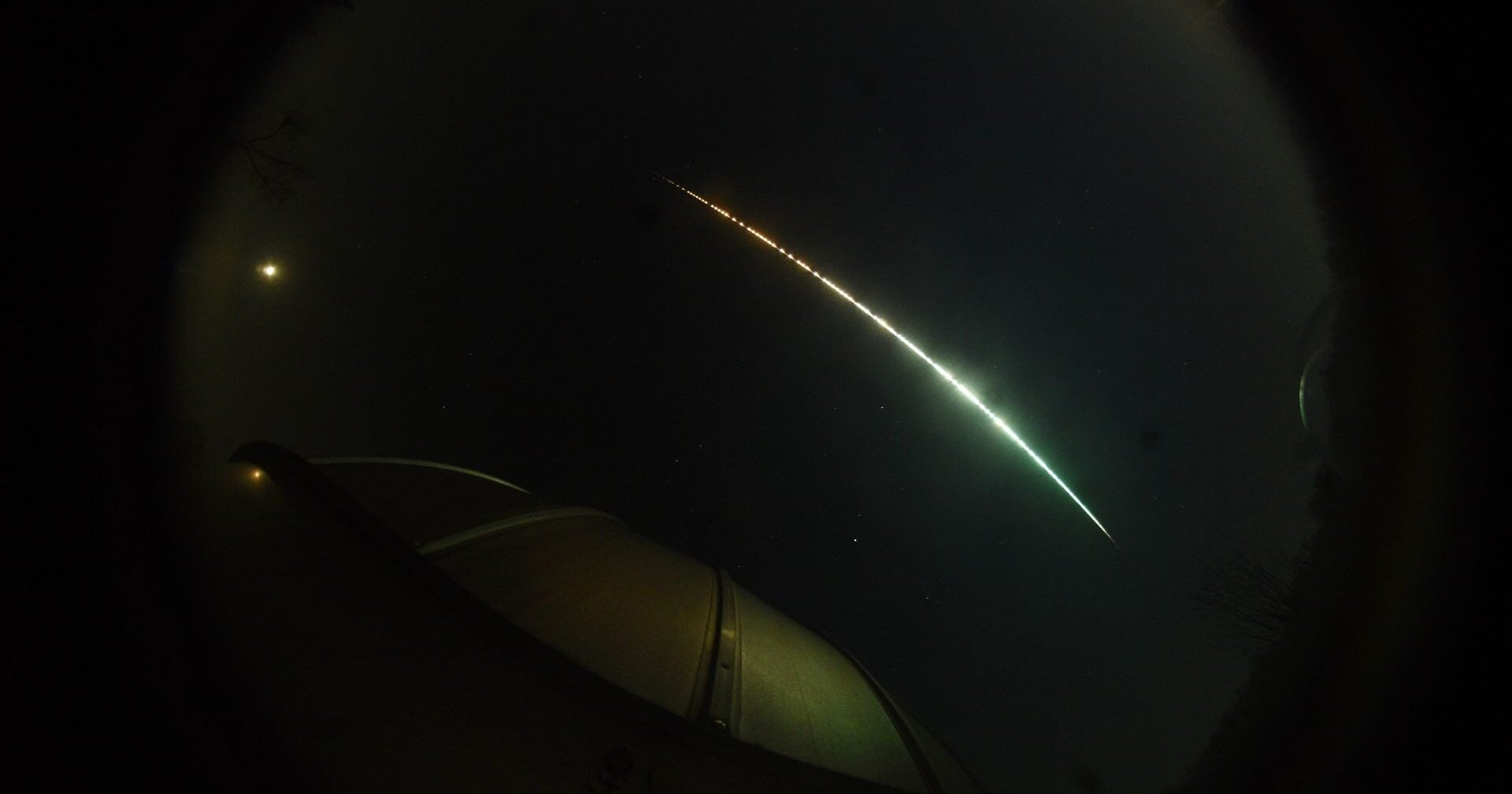Meteor that exploded in spectacular fireball over Niagara Falls was surprisingly small
Space rock produced streak of green light and sonic boom as it burned up over Ontario in 2022
Your support helps us to tell the story
From reproductive rights to climate change to Big Tech, The Independent is on the ground when the story is developing. Whether it's investigating the financials of Elon Musk's pro-Trump PAC or producing our latest documentary, 'The A Word', which shines a light on the American women fighting for reproductive rights, we know how important it is to parse out the facts from the messaging.
At such a critical moment in US history, we need reporters on the ground. Your donation allows us to keep sending journalists to speak to both sides of the story.
The Independent is trusted by Americans across the entire political spectrum. And unlike many other quality news outlets, we choose not to lock Americans out of our reporting and analysis with paywalls. We believe quality journalism should be available to everyone, paid for by those who can afford it.
Your support makes all the difference.A meteor that exploded in a spectacular fireball over Niagara Falls in 2022 was the smallest asteroid ever measured, a new study has found.
The asteroid, spotted by astronomers just hours before its stunning explosion over Canada, was only about the size of a house cat.
The space rock, dubbed 2022 WJ1, broke apart due to friction as it entered the Earth’s lower atmosphere in the early hours of 19 November 2022.
It quickly burned up, producing a streak of green light as it passed through the sky and a sonic boom near Ontario.

Once astronomers spotted the space rock heading towards the Earth, they positioned instruments along its predicted path to closely monitor it through the atmosphere.
They found that the asteroid’s trajectory likely caused almost all of its fragments to land in Lake Ontario with some of the main mass suspected to have crashed on land.
“Despite extensive searches, no meteorites had been recovered as of summer 2024, but residents in the area near St Catharines, Ontario, are encouraged to continue looking for what we believe is the main fragment, likely embedded in the ground,” scientists said in the study.
The bright green light emitted by the asteroid as it cruised through the atmosphere was seen as far as New York and Pennsylvania in the US.
Astronomers observed the space rock’s light spectrum as it burned. This enabled them to study its chemical constituents, including the silicate-rich surface. They estimated, based on these observations, that 2022 WJ1 was around 40-60 cm across, making it likely “the smallest asteroid” characterised in space. Originally, before its fragmenting fireball phase, the rock may have measured almost 0.5m across with a mass of 220 kg.
The latest study provides a new method combining telescope and meteor camera data to unravel the size and chemical makeup of asteroids arriving on the Earth. “Through a comprehensive comparison of telescopic and meteor camera analyses, we can thus conclude that not only do the two sets of techniques agree on the properties of WJ1, they also both support that the object was the smallest asteroid compositionally characterised in space,” scientists said.
Join our commenting forum
Join thought-provoking conversations, follow other Independent readers and see their replies
0Comments